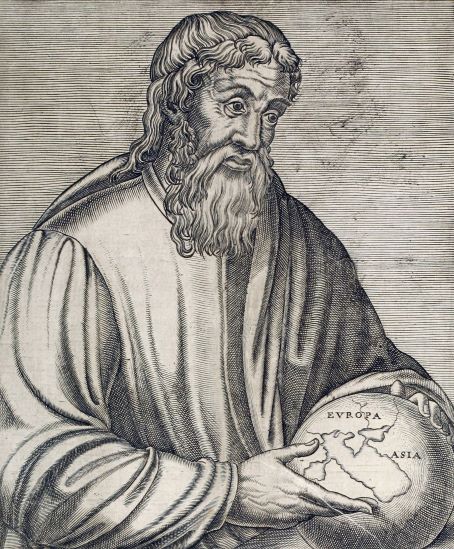Methodological proposal for data integration for forest mapping in the RPPN Reserva Volta Velha - Pe. Piet van der Aart – Itapoá (Santa Catarina, Brazil)
DOI:
https://doi.org/10.53455/re.v2i.3Keywords:
Mapping, Dense Ombrophyll Forest, Private Forest ReserveAbstract
Context: This work addresses a reflection on vegetation maps, a synthesis product that shows the location, extent and distribution of vegetation types in a given region. We understand the need to discuss the methodologies that allow identifying the stages of the forest with the challenge of integrating geospatial data from the official survey of the Brazilian government. Method: The methodology used was a theoretical review on what are the limits and what are the opportunities for the advancement of vegetation mapping in the last 5 years. Results: The results found helped to formulate a research proposal in the RPPN Reserva Volta Velha - Pe. Piet van der Aart in Itapoa, Santa Catarina, Brazil. This forest reserve is part of the Atlantic Forest biome - Dense Ombrophilous Forest.
Downloads
References
AGÊNCIA NACIONAL DE AVIAÇÃO CIVIL, 2016. Requisitos gerais para veículos aéreos não tripulados e aeromodelos. Disponível em: http://www2.anac.gov.br/transparencia/ . Acesso em 17/09/2020.
BERVEGLIERI, ADILSON ; TOMMASELLI, ANTONIO MARIA GARCIA ; IMAI, NILTON NOBUHIRO et al. Identification of Successional Stages and Cover Changes of Tropical Forest Based on Digital Surface Model Analysis. IEEE Journal of Selected Topics in Applied Earth Observations and Remote Sensing, v. 12, p. 1-13, 2016. ; Meio de divulgação: Digital; Website: [http://ieeexplore.ieee.org/document/7572061/]; ISSN/ISBN: 19391404.
BOHRER, Claudio Belmonte de Athayde et al . Mapeamento da vegetação e do uso do solo no Centro de Diversidade Vegetal de Cabo Frio, Rio de Janeiro, Brasil. Rodriguésia, Rio de Janeiro , v. 60, n. 1, p. 1-23, Mar. 2009.
CAGLIONI, Eder et al. ESTRUTURA E DIVERSIDADE DO COMPONENTE ARBÓREO DE FLORESTA ATLÂNTICA NO PARQUE NACIONAL DA SERRA DO ITAJAÍ, SANTA CATARINA. FLORESTA, [S.l.], v. 45, n. 2, p. 289-302, sep. 2014. ISSN 1982-4688. Disponível em: . Acesso em: 17 sep. 2020. doi:http://dx.doi.org/10.5380/rf.v45i2.33499.
COLOMINA, I., & MOLINA, P. Unmanned aerial systems for photogrammetry and remote sensing: A review. ISPRS journal of photogrammetry and remote sensing, 92, 79-97, 2014.
CONTO, D. de. Mapeamento dos fragmentos florestais para elaboração de planos municipais da Mata Atlântica. 2019. 61p. (Trabalho de Conclusão de Curso). Universidade Universidade do Extremo Sul Catarinense, UNESC, Criciúma, 2019.
COUTINHO, Leopoldo Magno. O conceito de bioma. Acta Bot. Bras., São Paulo , v. 20, n. 1, p. 13-23, mar. 2006.
DUPUS, C.;et al..A. How Can Remote Sensing Help Monitor Tropical Moist Forest Degradation?—A Systematic Review. Remote Sens. 12, 1087, 2020.
GALINDO-LEAL, C. & CÂMARA, I.G.(eds.). Mata Atlântica: biodiversidade, ameaças e perspectivas.São Paulo: Fundação SOS Mata Atlântica - Belo Horizonte: Conservação Internacional, 2005.
GASTON, K. J. Global patterns in biodiversity. Nature, v. 405, n. 6783, p. 220–227, 2000. IBGE. 1º Workshop sobre representação de biomas compatível a escala 1:250.000: Diretrizes para definição de limites. Relatório Técnico. Rio de Janeiro, 2018. Disponível em:
https://biblioteca.ibge.gov.br/visualizacao/livros/liv101588.pdf. Acesso em 17/09/2020
IBGE. 1º Workshop sobre representação de biomas compatível a escala 1:250.000: Diretrizes para definição de limites. Relatório Técnico. Rio de Janeiro, 2018. Disponível em: https://biblioteca.ibge.gov.br/visualizacao/livros/liv101588.pdf. Acesso em 17/09/2020.
IBGE, Manual técnico da vegetação brasileira: sistema fitogeográfico, inventário das formações florestais e campestres, técnicas e manejo de coleções botânicas, procedimentos para mapeamentos. 2. ed. rev. e ampl. Rio de Janeiro: IBGE, 2012.
IBGE. Mapas dos Biomas do Brasil. Escala: 1:5.000.000. Rio de Janeiro: IBGE, 2004. Disponivel em:ftp://geoftp.ibge.gov.br/informacoes_ambientais/vegetacao/mapas/brasil/biomas.pdf. Acesso em 17/09/2020.
IIZUKA, K .;et al. Estimativa da altura e diâmetro da árvore na altura do peito (DAP) a partir de modelos digitais de superfície e ortofotos obtidos com um sistema aéreo não tripulado para uma floresta de ciprestes japoneses ( Chamaecyparis obtusa ). Remote Sens , 10 , 13. 2018.
JOLY, Carlos Alfredo et al . Florística e fitossociologia em parcelas permanentes da Mata Atlântica do sudeste do Brasil ao longo de um gradiente altitudinal. Biota Neotrop., Campinas , v. 12, n. 1, p. 125-145, Mar. 2012 .
KAMEYAMA, S.; SUGIRUA, K. Estimating Tree Height and Volume Using Unmanned Aerial Vehicle Photography and SfM Technology, with Verification of Result Accuracy. Drones, 4, 19, 2020.
LINGNER , D. V. A Floresta Ombrófila Densa em Santa Catarina – Composição e padrões estruturais condicionados por variáveis geoclimáticas, 2015. Dissertação (Mestrado em engenharia Florestal) - Universidade Regional de Blumenau, Blumenau, Santa Catarina, 2015.
NETO, R. P. ; BREUNIG, F. M. Drone nas Ciências Florestasi. In: Gonzalo Prudkin; Fábio M. Breunig. (Org.). Drones e ciência: Teoria e aplicações metodológicas. 1ed.Santa Maria: FACOS-UFSM, 2019, v. 1, p. 68-90.
OCALAN, Taylan et al . Accuracy Investigation of PPP Method Versus Relative Positioning Using Different Satellite Ephemerides Products Near/Under Forest Environment. Earth Sci. Res. J., Bogotá , v. 20, n. 4, p. D1-D9, Dec. 2016.
PIRTI, A., et al. AN ALTERNATIVE METHOD FOR POINT POSITIONING IN THE FORESTED AREAS. Sumarski List, 140, 155-163, 2016.
PREFEITURA MUNICIPAL DE ITAPOÁ. Plano Municipal da Mata Atlântica de Itapoá-SC, 2019. Disponível em: https://static.fecam.net.br/uploads/752/arquivos/1227921_PMMA_Itapoa.pdf. Acesso em 17/09/2020
PREFEITURA MUNICIPAL DE JOINVILLE. Plano Municipal e Recuperação da Mata Atlântica Apêndice I - Diagnóstico. Joinville, 2018. Disponível em: https://www.joinville.sc.gov.br/wpcontent/uploads/2019/04/Ap%C3%AAndice-I-
Published
How to Cite
Issue
Section
License
Copyright (c) 2021 Gracianne Kovalski de Melo, Eduardo Augusto Werneck Ribeiro

This work is licensed under a Creative Commons Attribution 4.0 International License.
The magazine follows the Creative Commons (CC BY) standard, which allows the remix, adaptation and creation of works derived from the original, even for commercial purposes. New works must mention the author(s) in the credits.













